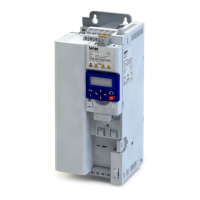6 EtherNet/IP
Acyclic Data Access (Explicit Messaging)
40 Lenze · Inverter i550 - Cabinet · Ethernet Manual · 0.1 EN · 12/2015
Saving the Configuration in the Controller
After adding the scanner (or bridge) and the adapter to the I/O configuration, the configuration must be down-
loaded to the controller. The configuration should also be saved to a file on your computer.
1. On the top toolbar, click [Communications] then select [Download] from the pull down menu. The Download
dialog box will open.
2. Click [Download] to download the configuration to the controller. When the download is successfully com-
pleted, RSLogix enters online mode and the I/O OK box in the upper-left part of the screen is green.
3. On the top toolbar, click [File] then select [Save] from the pull down menu. If this is the first time the project
is saved, then the [Save As] dialog box will open. Navigate to a folder, type a file name and then click [Save]
to save the configuration to a file on your computer.
6.8 Acyclic Data Access (Explicit Messaging)
Acyclic / non-cyclic / Service access provides a method for the network master to access any drive or
module parameter.
This kind of parameter access is typically used for monitoring or low priority non-scheduled parameter
access. However it can also be used to control the drive by writing assembly data.
The iSeries drive EtherNet/IP module supports several different methods of doing this.
Explicit Messaging:
An explicit message is a logical instruction in the PLC's program used for messaging. It can be used to read/write
to either a parameter setting or an assembly's data. In the case of CompactLogix, ControlLogix and SoftLogix the
MSG instruction provides the capabilities described in this section. For other PLC types, consult that PLC's pro-
gramming documentation.
General drive variables (parameters and subindexes) are in class 0x6e. The Instance is the parameter's index
number and the attribute is the subindex number. If there is no subindex, set attribute to 0. A attribute of 1 is
supported for those clients that don't support an attribute value of 0. These variables are all data type SINT (8
bit/ 1 byte objects), INT (16 bit/2 byte objects), or DINT (32 bit/4 byte objects) and must have the source length
set to coincide. You can check the length of the object in the drive’s programming manual:
To write a parameter value to the iSeries drive using EtherNet/IP explicit messaging set the following:

